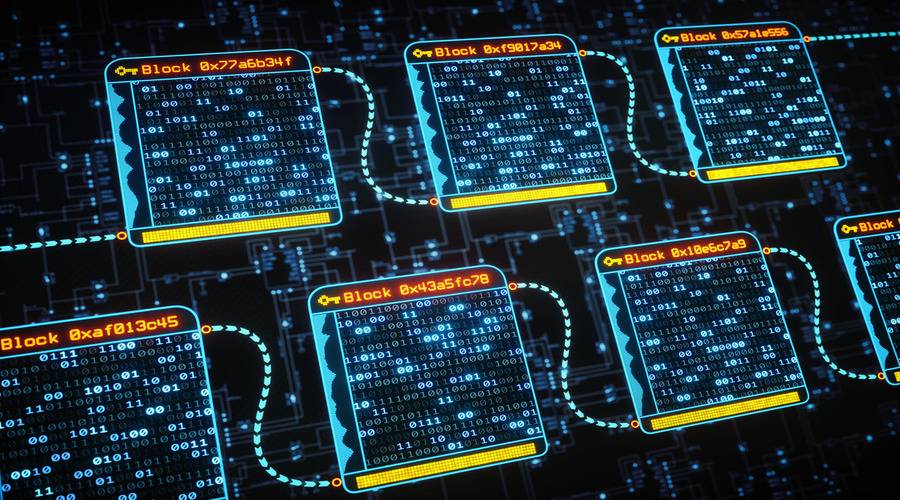In the world of blockchain technology, consensus mechanisms play a vital role in achieving agreement and securing the network. One such consensus mechanism gaining attention is the Proof of Capacity (PoC) algorithm. PoC offers an energy-efficient and secure way of achieving consensus. This article provides an overview of the Proof of Capacity consensus mechanism, exploring its working principles, advantages, challenges, and real-world applications.
What is Proof of Capacity?
Proof of Capacity is a consensus mechanism used in blockchain networks to validate transactions and secure the network. Unlike traditional consensus mechanisms like Proof of Work (PoW) or Proof of Stake (PoS), PoC focuses on utilizing storage space rather than computational power or stake ownership.
In PoC, participants, known as miners, allocate a significant amount of their available storage space to generate plots. These plots act as a representation of their capacity. Miners then compete to solve a mathematical puzzle based on these precomputed plots. The miner who finds the solution first can create a new block and add it to the blockchain, earning the associated rewards.
How Does Proof of Capacity Work?
To understand how Proof of Capacity works, let’s dive into the process step by step:
- Plot Generation: Miners allocate a portion of their storage space to generate plots. These plots are essentially large files that contain a sequence of hashes derived from a cryptographic function. The size of the plots depends on the available storage space.
- Challenging Puzzle: A challenging mathematical puzzle is defined by the network. Miners use their precomputed plots to search for a solution to this puzzle. The puzzle is designed to be computationally intensive but can be quickly verified once a solution is found.
- Solution Verification: Miners start searching for a solution by reading their plots in sequential order, checking if any hashes match the puzzle’s requirements. Once a solution is found, the miner can broadcast it to the network for verification.
- Block Creation and Rewards: The miner who successfully finds the solution first can create a new block and append it to the blockchain. This miner is rewarded with transaction fees and newly minted coins, depending on the blockchain’s reward structure.

Proof of Capacity (PoC) Consensus Mechanism: An Overview
Advantages of Proof of Capacity
- Energy Efficiency: PoC is more energy-efficient compared to consensus mechanisms like Proof of Work (PoW) since it utilizes storage space instead of relying on computational power. This makes it environmentally friendly and reduces the carbon footprint of blockchain networks.
- Decentralization: PoC encourages wider participation as anyone with storage space can participate in mining. This promotes a more decentralized network, where power is not concentrated in the hands of a few large mining operations.
- Security: PoC provides a high level of security since attackers would need to possess a significant portion of the network’s storage capacity to compromise the consensus. This makes it economically impractical for malicious actors to launch successful attacks.
- Fair Distribution: By allowing anyone with storage space to participate, PoC ensures a fairer distribution of rewards. It reduces the advantage of centralized mining farms and promotes a more inclusive ecosystem where individuals can actively participate in mining and earn rewards.
- Compatibility with Existing Hardware: PoC can be implemented on commodity hardware with large storage capacities. This means that miners can utilize their existing resources without the need for specialized and expensive mining equipment, further enhancing accessibility and participation.
- Resistance to Centralization: PoC reduces the likelihood of centralization by removing the reliance on computational power or stake ownership. This helps prevent the concentration of power and promotes a more democratic and decentralized blockchain ecosystem.
Challenges and Limitations of Proof of Capacity
- Plotting Time: Generating plots in PoC requires significant time and computational resources upfront. The initial plotting process can be time-consuming, especially when dealing with large storage capacities, which may hinder the efficiency of the mining process.
- Scalability: As the size of the blockchain grows, the storage requirements for miners increase. This scalability challenge can limit the adoption of PoC in large-scale blockchain networks, as it requires miners to allocate and manage substantial storage space.
- Sybil Attacks: PoC is susceptible to Sybil attacks, where an attacker creates multiple identities to gain a significant share of the network’s storage capacity. Implementing effective countermeasures is crucial to mitigate this risk and maintain the integrity of the consensus.
- Storage Costs: As the size of the blockchain and the required storage capacity increase, miners may face higher costs associated with acquiring and maintaining the necessary storage space. This can pose financial challenges, especially for small-scale miners.
- Plotting Efficiency: The efficiency of the plotting process, including disk I/O operations and hash computations, can impact the overall performance of PoC. Improving the plotting efficiency is essential to enhance the speed and effectiveness of mining operations.
- Adoption and Awareness: PoC is a relatively newer consensus mechanism compared to well-established alternatives like Proof of Work and Proof of Stake. The limited adoption and awareness of PoC within the blockchain community can pose challenges in terms of network support and recognition.
Comparison with Other Consensus Mechanisms
Let’s compare Proof of Capacity with other popular consensus mechanisms:
- Proof of Work (PoW): PoW relies on computational power, making it energy-intensive. PoC offers a greener alternative, utilizing storage capacity instead.
- Proof of Stake (PoS): PoS requires participants to hold a certain amount of cryptocurrency. PoC allows anyone with storage space to participate, promoting broader network participation.
- Delegated Proof of Stake (DPoS): DPoS introduces the concept of voting for delegates to validate transactions. PoC does not rely on voting but rather on the allocation of storage capacity.
Real-World Applications of Proof of Capacity
Proof of Capacity has potential applications in various fields, including:
- Decentralized Storage: PoC can be utilized in decentralized storage systems where individuals contribute their unused storage space to create a distributed storage network.
- Blockchain-based File Systems: By leveraging PoC, blockchain-based file systems can be developed, allowing secure and efficient storage and retrieval of files.
- Data Archiving: PoC can be employed in long-term data archiving systems, ensuring the integrity and availability of stored data.
The Future of Proof of Capacity
Proof of Capacity continues to evolve, and its potential for practical implementation is gaining recognition. As the blockchain industry seeks more energy-efficient and scalable solutions, PoC stands as a promising alternative. With further research and development, PoC may find increased adoption across various blockchain networks in the future.
- Energy Efficiency and Sustainability: As the global focus on environmental sustainability increases, the energy efficiency of PoC provides a significant advantage. Its utilization of storage space instead of computational power aligns well with the growing demand for greener blockchain solutions. PoC has the potential to attract attention and adoption from projects and industries seeking more sustainable consensus mechanisms.
- Scalability and Storage Advancements: Ongoing advancements in storage technology, such as the increasing availability of high-capacity hard drives and solid-state drives, can address scalability challenges associated with PoC. With larger storage capacities becoming more affordable and accessible, PoC networks can accommodate a higher number of transactions and participants, further enhancing scalability.
- Research and Development: Continued research and development efforts dedicated to optimizing PoC algorithms and plotting processes can contribute to its future growth. Enhancements in plotting efficiency, storage utilization, and network performance can make PoC more competitive among other consensus mechanisms.
- Applications in Decentralized Systems: PoC can find applications in various decentralized systems beyond cryptocurrencies. For example, it can be integrated into decentralized storage platforms, where participants contribute their unused storage space to create distributed and secure data storage networks. Such applications can drive the adoption of PoC in practical use cases beyond traditional blockchain networks.
- Industry Adoption and Awareness: As PoC gains more recognition and understanding within the blockchain community and industries, its adoption is likely to increase. Projects and developers may explore PoC as a viable alternative to existing consensus mechanisms, considering its energy efficiency, security, and decentralized nature.
Conclusion
Proof of Capacity (PoC) offers an innovative approach to achieving consensus in blockchain networks. By utilizing storage space rather than computational power or stake ownership, PoC presents a greener, more inclusive, and secure consensus mechanism. While facing challenges such as plotting time and scalability, PoC’s advantages in energy efficiency, decentralization, and security make it a compelling choice for future blockchain applications.
FAQs (Frequently Asked Questions)
Q: How does Proof of Capacity differ from Proof of Work?
A: Proof of Capacity relies on storage space, whereas Proof of Work relies on computational power. PoC is more energy-efficient and environmentally friendly.
Q: Can anyone participate in Proof of Capacity mining?
A: Yes, anyone with storage space can participate in Proof of Capacity mining, promoting wider network participation and decentralization.
Q: What are the potential real-world applications of Proof of Capacity?
A: Proof of Capacity can be applied to decentralized storage systems, blockchain-based file systems, and data archiving, among other applications.
Q: Is Proof of Capacity secure against attacks?
A: Proof of Capacity offers a high level of security, but it is susceptible to Sybil attacks. Implementing effective countermeasures is crucial to mitigate this risk.
Q: What is the future of Proof of Capacity?
A: Proof of Capacity continues to evolve and has the potential for increased adoption in the blockchain industry, particularly in energy-efficient and scalable applications.
I’m a best-selling author and leading authority in the world of cryptocurrency. I have been involved in the crypto community since 2012 and have helped numerous startups and organizations on blockchain strategy. I am a regular contributor to Forbes and CoinDesk, and my work has been featured in The Wall Street Journal, Bloomberg, Reuters, and other major media outlets. In addition to writing for publications, I am also a sought-after speaker on cryptocurrency and blockchain technology niches respectively.



